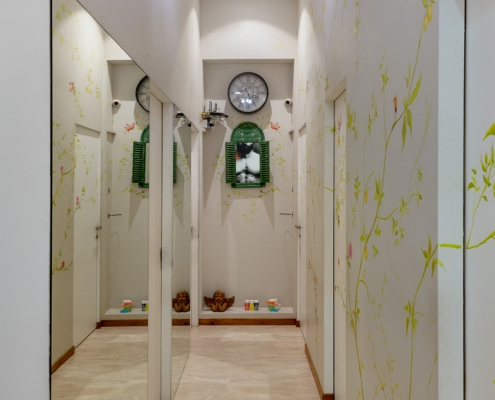Get To Know Your Skin
Thank god for our skin! Like a wrapper protects a candy bar, the skin acts as the wrapper for our body. So imagine walking around without our wrapper. With all our muscles, nerves, internal organs visible, how freaky it would be! Never mind how smooth or what colour it is, keeping your skin healthy is important.
Let me start by telling you a bit about skin, its various structures and functions, and some interesting facts related to it.
It is the largest and one of the most dynamic organs in the body
The skin is also most exposed to the outside, making it vulnerable to ambient humidity, pollution, temperature, sun etc. Therefore, it is necessary to take constant account of your surroundings and notice what it is doing to your skin. Some surroundings may leave you with a short- term and quickly reversible effect like dryness while some may leave you with long-term damage which may take much longer to undo—like the harmful rays of the sun.
It is elastic to a certain extent and has the tendency to adapt to the changes in your body size as you put on and lose body mass—like muscle, fat, or pregnancy weight
Just imagine if the skin on your abdomen never shrunk back after pregnancy! Or it never went back to wrapping your newly acquired muscular body. But there is only so much that the skin can handle. So like any other expandable thing, it reaches a breaking point and if the elastin breaks up and the collagen gets too pulled, you end up getting stretch marks. At times there may be skin excess that may have to be surgically removed but by and large if you are patient for 2 to 3 months, the skin shrinks back.
70 percent of the skin is water
There you go! Now you know why every skincare article that you ever read on the Internet or in a magazine tells you to drink a minimum of 8 glasses of water every day to keep the skin hydrated. However, I do not insist on the number. It is important that you hydrate well. Whether with water, tender coconut water, buttermilk, vegetable juice, soup—I leave it to you. If you lose water a lot during the day, be it through perspiration or staying in the air conditioning for too long. When you are dehydrated, it will show on your skin and your system will go haywire—your mouth will feel parched, your lips will turn dry, the colour of your urine will become darker, and your skin will feel dull and lifeless.
25 percent is protein
Protein is not only important for people on a special weight loss or muscle building programme but for all of us—young or old. Protein is your building block. It helps build and repair pretty much every tissue of your body, including your hair and nails. So it is very important that you make protein a good part of your natural daily diet. Any kind of supplements should be taken under expert advice only.
5 percent is fats and minerals
Time and again I have seen that the first thing a person on a weight loss spree does is stop the intake of rice and oil. This is a bad idea. Yes, anything in excess is harmful for the body, but totally cutting out any one food component is no good either. You need at least 2 spoons of any form of oil, be it coconut, olive, rice bran, or ghee in your daily food plan. If not, it tells on your skin, hair, and the general health of your organs. There are certain important micronutrients like fat-soluble vitamins that may not get absorbed at all. So not only does your skin need moisturizing from the outside, it also needs it from the inside, and definitely more so if you are 30 plus. And when you reach your 50s, the subcutaneous fat or the fat beneath your skin starts thinning to a point that a specific type of eczema called asteatotic eczema develops. It is characterized by itching and severe dryness of skin, especially on the shin and lower extremities. This scratching leads to wounds.
Common terms associated with skin
NMF: You have often seen the letters NMF written on the lotions you buy. NMF stands for Natural Moisturising Factor. NMFs make up an expansive group of ingredients that include amino acids, ceramides, hyaluronic acid, cholesterol, fatty acids, triglycerides, phospholipids, glycosphingolipids, urea, linoleic acid, glycosaminoglycans, glycerin, mucopolysaccharides, and sodium PCA (pyrrolidone carboxylic acid). The creams that have urea, lactate, or any of the ingredients mentioned above also add to the NMF on your skin. They help stabilize and maintain this complex intercellular- skin matrix. Using moisturizers of any kind that contain NMFs allows your skin to do its job of repairing and regenerating itself without the impedances brought on when skin is suffering from dryness, environmental distress, or excess irritation.
> Lipids: They are the fats in the skin that give the skin its bounce. The lipids in stratum corneum are found between dead skin layers, which also maintain the hydration factor of the skin. Intercellular lipids have 40–50% ceramides, 20–25% cholesterol, 15–25% fatty acids, and 5–10% cholesterol sulphate. They make 15% of the dry weight of the dead layer. These lipids of the epidermis decide the hydration and the oil content of the skin.
> Collagen: Collagen is the most abundant protein in our body, accounting for around 30% of the protein content of the human body. Collagen fibres are soft and flexible, but also strong and inelastic. They make up almost 75% of the dry weight of your skin and comprise the major component of the dermis. There are different types, type 1 being the most abundant collagen in the body.
> Elastin: Elastin forms a continuous network throughout the dermis. It maintains the normal configuration of the skin due to its elastic recoiling. It undergoes significant changes upon sun exposure and with age.
Skin by and large has many layers but I am not going into too much detail about it. What you need to know about are the three major layers—the epidermis, the dermis, and the subcutaneous fatty tissue layer.
The epidermis is the top layer which consists of dead cells on top and germinating cells and pigment producing cells etc. at the bottom.
The dermis is the central layer of the skin where you have a mesh of collagen and elastin, the hair roots, oil glands, sweat glands, the capillaries that supply blood and take the toxins away, nerve endings, and ground substance.
The subcutaneous fatty tissue layer lies underneath the dermis and has more blood vessels and fats that act as a cushion to your skin.
Functions of the skin
> Protection: It acts as a barrier, protecting our body from environmental impact and microorganisms.
> Regulation: It maintains body temperature through sweat and hair—one of the essentials for a healthy body.
> Sensation: The network of nerve cells helps us feel through touch, pain, heat, and cold.
> Excretion and Secretion: Sweat is not just water. It also contains urea and creatinin which act like toxin excretion. Secretions like sebum keeps the skin oil balanced and keep the natural microorganisms of the skin in a healthy state.
Skin as a protective organ
Now you know why you should not scrub off the top dead layer aggressively. Also do not wash your skin too many times or you may one, strip all the natural secretions and two, trigger a feedback from the skin when it is super dry and cause the oil glands to over-secrete. Excessive skin peeling treatments make the skin more vulnerable to damage. Especially avoid those treatments that rip your outer dead skin layer off before you go on a sunny or a beach holiday.
Skin also acts as a barrier against water loss. Trans- epidermal water loss is water that passes from your deeper tissues through the epidermal layer to the surrounding atmosphere via diffusion and evaporation process. The water loss from the skin is affected by the level of humidity, temperature, weather, and your skin’s natural moisture content.
This is a continuous process over which we have little control. It can increase due to disruption to the skin barrier due to wounds, scratches, burns, or exposure to harsh surfactants. This leads to extreme dryness of the skin. Disturbance in any layer of the skin causes a loss of water from the skin.
The stratum corneum has 30% water which is associated with elasticity of the outer layer of the skin. The innermost layer of the stratum corneum has the maximum percentage of water that supports the outer layer. The moisture on the outermost layer of the skin is dependent on the ambient humidity.
Thirdly, the skin is your biggest immune guard that keeps you safe from infections. But when you have chapped skin or cuts, you have to be extra careful. This is especially important during the monsoon months when there is higher humidity and more chances of bacteria to grow. So keep your skin clean and dry, yet hydrated as well.
But there is a flip side to this. Since the skin forms a protective barrier, the lotions that you apply play a major role in the kind of protection offered to your skin. You have to choose products from skincare companies that are research-oriented because they use the right vehicles, right version of the actives (key ingredients or ingredients that give you the desired result), and the appropriate molecular size to deliver the ingredients into the skin through the top layer.
Skin as an excretory and secretory organ
The skin helps you sweat out toxins and chemicals. So, when you are at the gym and working out, I would not advise you to repeatedly wipe yourself with a hand towel. You should instead wash your sweat off the skin with water or use a facial mist spray and dab it off with a face tissue. Avoid using any heavy moisturizers or make up or even sunscreens if you are working out indoors.
Also, do not, I stress, do not put any skincare products or make up on sweaty skin as it will mix with the toxins already on top and make things worse.
There are 3 units that can cause trouble if blocked. 1. With sweat glands, they are seen as tiny bumps at times beneath your eye, treated best with burning them with radio frequency(or simply by nipping them off under aseptic precautions with the right sized needle) at your doctor’s clinic. 2. With sebaceous/oil glands you see them as whiteheads when they are closed with a layer of skin on top; blackheads when they are open and the content gets oxidized when in contact with oxygen in air; acne, when this gets infected, or cysts. The whole unit of oil gland and hair follicle could be affected which is when it is called pilosebaceous cyst or abscess. 3. Only hair follicle blocked and infected, shows up as tiny white pus boils at the base of your hair i.e folliculitis. This could be on any hair bearing part of the skin on your body, scalp, or beard area for men.
Skin as a sense organ and temperature regulator
We all know skin is a sensory organ. How else would we feel the touch of a loved one? Your skin maintains the temperature of your body too. This may make the skin look either pale or flushed depending on the weather or outside environmental conditions.
For example, in winter your skin looks pale because it is trying to regulate the body heat by constricting the blood vessels in the periphery. The opposite happens in summer when you have dilated capillaries to let the heat escape, and more blood flows into the skin. This makes you look flushed and red.
In both cases, you have to ensure that you don’t let the extremes happen. So when it is flushed in summer, you have to calm it down with a splash of cold water or with an application of cold calamine. In winter you have to wash it with warm water to keep the circulation going. You can also use little tapping movements over your skin to stimulate it by using the flat inner surface of the full length of your fingers. You can bend down to get blood rushing to the skin or you can try a head or shoulder stand position if you are a yoga enthusiast.
So here you are—your own skin expert!
Classification of skin type (by colour and response to sun)
Skin types can be classified in many ways. But the two classifications that will help you to choose skincare and procedures will be the ones determined by the oil and water content of your skin, and by the colour and response to the sun.
The first step in assessing your skin is washing your face really well at night. Go to bed without putting anything on your face. Avoid having any air-conditioning or heater on; you could leave your fan on though. Then, when you get up in the morning, pat your face all over. Specifically, check your:
> T-Zone which is from the centre of your forehead down your nose and chin; and includes the part of cheek next to your nose
> C-Zone which is the part of your cheek nearer to the ears and your jawline, temple, and forehead near the hairline
Now see if they feel oily or dry. If the area is greasy, you obviously have oily skin. If it feels crepey (dry) and fine-textured, you are dry skinned. If you feel some areas are dry and some oily, you have a combination skin type.
Some signs that you can look out for
If you have large open pores, then you have oily skin. If the pores are tightly shut, then you have dry skin. If your skin looks red and flushed, you have sensitive skin. If you have flaky and chapped skin or lips, visible fine lines, it is too dry and dehydrated.
However, this does not mean that your skin will remain the same for the rest of your life. It could only be for that day or that moment. You may even notice intra- day skin changes. So as the day progresses, you will see your pores opening up and secreting more oil. Or it could be a seasonal change where in summer your skin feels a certain way and in winter a certain way. Your skin also changes as you age and you will notice a change every three to four years. For instance, as a young woman, in your 20s your skin was oily which turns dry as you reach your 30s and then as you hit your 40s it may turn oily again, progressing towards dryness at menopause.
Frankly a purely oily or dry skin type is very rare. It is usually a combination in various proportions. The most common is oily in the T-zone and dry in the C-zone. Any of these can be combined with sensitive skin, which is usually dry+red. Any of these can be in combination with dehydrated skin. Yes, even oily skin can be dehydrated.
The second classification is by the colour and response to sun which is also called The Fitzpatrick Scale.
By that scale there are six types, classified as I, II, III, IV, V, VI. While Caucasians mostly have skin types I and II and Africans type VI, we Indians usually fall under skin type III, IV or V. So here’s how you decide what is your skin type:
> Type I Pale white; blonde or red hair; blue eyes; freckles.
Always burns, never tans.
> Type II White; fair; blonde or red hair; blue, green or hazel eyes.
Usually burns, tans minimally.
> Type III Creamy white; fair with any hair or eye colour; quite common.
Sometimes mild burn, tans uniformly.
> Type IV Moderate brown; typical Mediterranean skin tone.
Rarely burns, always tans well.
> Type V Dark brown; Middle Eastern skin type.
Very rarely burns, tans very easily.
> Type VI Deeply pigmented; dark brown to black.
Never burns, tans very easily.
Remember, even if your skin type may not have burning sensation, does not mean that sun rays are not harming your skin. A tan will definitely show up—it might be immediate or delayed.
Leave a Reply
Want to join the discussion?Feel free to contribute!













some really nice and useful information on this website , also I conceive the style holds superb features.